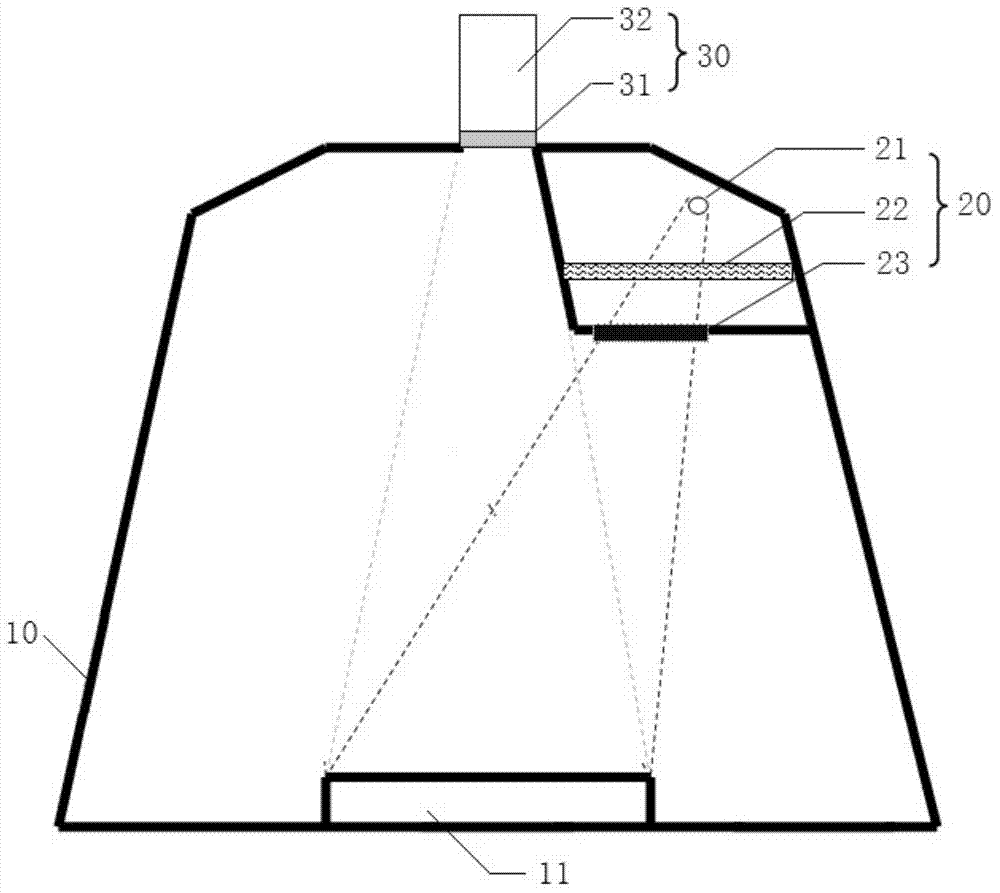Fluorescence imaging analysis system and fluorescence imaging analysis method thereof
A fluorescence imaging and analysis system technology, applied in the field of biology, can solve problems such as high requirements for instrument use and maintenance, complex structure of detection instruments, and restrictions on the application of fluorescent dyes, and achieve the best detection effect, exquisite structure design, and low energy consumption. Effect
- Summary
- Abstract
- Description
- Claims
- Application Information
AI Technical Summary
Problems solved by technology
Method used
Image
Examples
Embodiment 1
[0081] 1. Construction and cultivation of Escherichia coli carrying a fluorescent protein expression vector, the name of the fluorescent protein is GFP (green fluorescent protein), and 395nm and 475nm are the maximum and second maximum excitation wavelengths respectively.
[0082] 2. Quantitative determination of excitation light:
[0083] Step 1: Place a series of Escherichia coli carrying fluorescent protein expression vectors with known concentrations and serial dilutions on the sample stage in sequence, and detect one sample at a time. The detected object carries fluorescent substances, and the sample stage is placed inside the shell;
[0084] Step 2: The excitation light source 21 is a blue LED light; the excitation filter 23 is a ZB1 model, and its transmission spectrum range is 300-500nm; the filter lens 31 is a JB510 model, and its transmission spectrum range is 510nm±10nm~2500nm . Select and determine the excitation light source, excitation filter and filter lens ac...
Embodiment 2
[0093] In this embodiment, the imaging unit 32 and the imaging analysis unit 33 are utilized. The camera unit 32 adopts a digital camera, and uses the camera analysis unit 33 connected with the digital camera to perform real-time measurement and analysis. The purpose of this embodiment is to determine the relationship between the concentration of green fluorescent protein and the reading in a relatively large concentration range. The measurement conditions of the present embodiment, the shooting conditions of the digital camera (comprising aperture and exposure time), the green fluorescent protein species and the corresponding optical filters thereof are all the same as in Example 1, wherein the linear regression equation used to measure the actual concentration is determined by the above Embodiment 1 records, and linear regression equation is: y=0.0532x+16.628, R 2 = 0.9803. If the linear regression equation is unknown, repeat steps 2-4 to draw a standard curve to obtain th...
Embodiment 3
[0102] In this embodiment, the camera unit 32 and the highly integrated camera analysis unit 33 are used to capture the fluorescence and measure and analyze the concentration of the fluorescent dye / fluorescent protein. The camera unit 32 and the camera analysis unit 33 are integrated, which replaces the conventional working method of combining a digital camera and a computer. The integrated camera unit 32 and camera analysis unit 33 greatly reduce the volume and weight of the system of the present invention, reduce its production cost while satisfying its performance, and are easy to use.
[0103] In this example, SYBR Green I combined with DNA to emit fluorescence was used for analysis, and the eppendorf tube containing SYBR Green I+DNA solution was placed in the fluorescence imaging analysis system of the present invention. Wherein, the excitation light source 21 is a blue LED lamp; the excitation filter 23 is a ZB1 model, and its light transmission spectrum range is 300-500...
PUM
 Login to View More
Login to View More Abstract
Description
Claims
Application Information
 Login to View More
Login to View More - R&D
- Intellectual Property
- Life Sciences
- Materials
- Tech Scout
- Unparalleled Data Quality
- Higher Quality Content
- 60% Fewer Hallucinations
Browse by: Latest US Patents, China's latest patents, Technical Efficacy Thesaurus, Application Domain, Technology Topic, Popular Technical Reports.
© 2025 PatSnap. All rights reserved.Legal|Privacy policy|Modern Slavery Act Transparency Statement|Sitemap|About US| Contact US: help@patsnap.com



